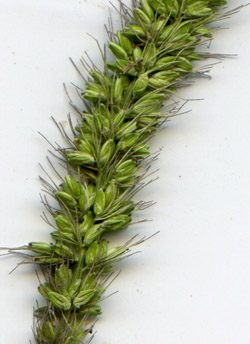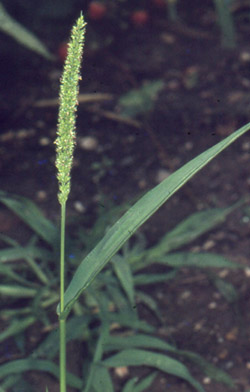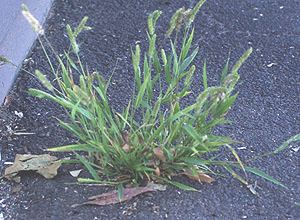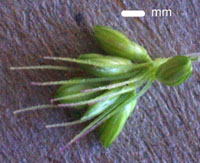Is it a native?
Whorled Pigeon-grass - introduced (*Setaria verticillata)
Home...
Menu...
Common name index...
Scientific name index.....
Glossary ...
The grass plant ....
Other grasses ....
Slender Pigeon-grass




Native to temperate northern hemisphere. Annual. C4.
Family. Poaceae (Grass family).
Whorled Pigeon-grass is common in disturbed areas.
Identification:
- it is a summer grass - it begins to grow strongly in mid-summer.
- the flower forms a dense, cylindrical cluster, about a centimetre wide
- bristles rise from the flower stalks, just below the spikelets
- the 1st glume is half spikelet length, the 2nd glume as long as the spikelet
- the spikelets have a lower sterile lemma and an upper fertile lemma
- the leaves are flat
- the ligule is a fringed membrane, 1-2mm long.
The summer growth, the bristles from the base with upward-pointing teeth, and the dense cylindrical flower clusters are distinctive.
Setaria: from seta, a bristle. verticillata whorled i.e. arranged in one or more rings around the axis.
1: Dense cluster of spikelets. Bristles rise from the base of the spikelets. 2. Leaves are broad and green. 3. Growing in a pavement crack. Barker St, Castlemaine. 4. Close-up of several spikelets.